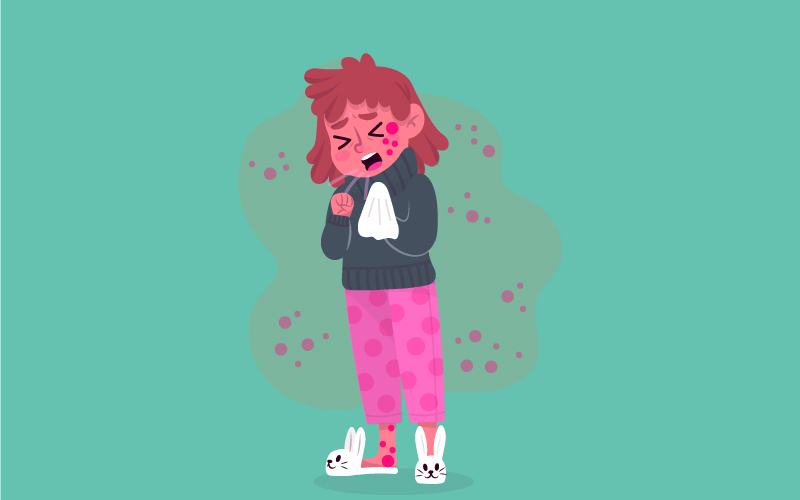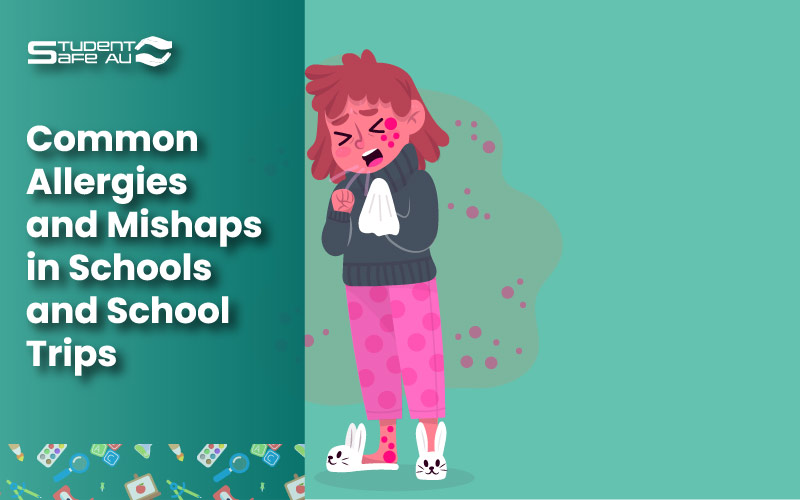The most common school mishaps during the summer season
Managing student safety and welfare is a top priority for every school coordinator and educator, especially during school trips and daily activities. Despite best efforts, students are exposed to various potential mishaps, ranging from allergic reactions to minor injuries. With the right preparation and support systems in place, schools can significantly reduce risks. Let’s explore the most common allergies and bodily mishaps that occur in schools and on school trips and how to be proactive in ensuring student well-being.
Additionally, we’ll highlight how Student Safe AU is the top choice for independent Australian schools, offering bus hire for education and comprehensive safety and transport management solutions.
Common Allergies to Watch For
1. Food Allergies
Food allergies are one of the most common health concerns among schoolchildren. Common culprits include peanuts, dairy, gluten, and shellfish. A child with a severe food allergy can experience symptoms ranging from mild rashes to life-threatening anaphylaxis.
What to Do:
- Ensure that staff are trained to recognise signs of allergic reactions.
- Have allergy action plans in place, including access to EpiPens or other emergency treatments.
- Inform catering staff and ensure allergen-free meals for affected students.
Safety measures should be doubled during school trips. Children can be exposed to unknown ingredients in restaurants or at public events, increasing the risk of an allergic reaction. With Student Safe AU, educators can rest assured that all dietary requirements are communicated clearly during transport and dining stops, minimising these risks during excursions.
2. Insect Sting Allergies
Bees, wasps, and other insects pose an allergy risk, especially during outdoor school activities or nature trips. Insect stings can cause severe allergic reactions that require immediate attention.
What to Do:
- Carry antihistamines and EpiPens on all trips.
- Educate students on avoiding known insect habitats, such as areas with standing water or flowers.
- Assign first aid-trained staff to all outdoor excursions.
Student safety and welfare measures should include pre-trip risk assessments, which Student Safe AU expertly handles. By identifying potential hazards at excursion sites, schools can better prepare for incidents.
3. Environmental Allergies
Dust, pollen, and mould can trigger allergic reactions in students, particularly those with asthma or hay fever. To avoid triggering these conditions, classrooms and school transport vehicles must be kept clean and allergen-free.
What to Do:
- Ensure proper ventilation and cleanliness in school spaces.
- Encourage students to take preventative medications before trips, particularly during pollen-heavy seasons.
- Keep asthma inhalers and antihistamines accessible during both school hours and excursions.
Student Safe AU ensures that all transport vehicles are cleaned and properly maintained, providing students with safe and allergen-free transportation to and from school trips.

Common Bodily Mishaps
1. Slips, Trips, and Falls
Slips and falls are among the most frequent accidents in schools and on school trips, often resulting from uneven surfaces, wet floors, or cluttered environments.
What to Do:
- Ensure clear signage around hazards like wet floors or construction zones.
- Have students wear appropriate footwear, particularly during outdoor or active trips.
- Regular inspections of school grounds should be conducted to identify and rectify potential hazards.
These risks can increase on school trips when students are in unfamiliar environments. Student Safe AU helps by conducting site assessments and ensuring safe student transport routes, reducing the likelihood of mishaps.
2. Sports Injuries
Sports-related injuries are common during physical education classes and sports events. They can range from sprains and strains to more serious incidents like fractures.
What to Do:
- Provide proper safety gear, including helmets, pads, and supportive footwear.
- Ensure teachers are trained in basic sports injury treatment.
- Avoid pushing students beyond their physical limits.
Having access to immediate transport is crucial in the case of sports-related injuries. Student Safe AU offers fast, reliable transport solutions, ensuring injured students can be taken to medical facilities promptly.
3. Heat Exhaustion and Dehydration
Heat exhaustion and dehydration can pose significant risks during hot Australian summers, particularly on outdoor school trips.
What to Do:
- Ensure students drink plenty of water and wear sun protection, including hats and sunscreen.
- Schedule breaks in shaded or air-conditioned areas.
- Avoid strenuous activities during the hottest parts of the day.
Student Safe AU prioritises student safety and welfare during trips. It provides vehicles equipped with air conditioning and hydration supplies, helping students stay cool and comfortable during their journeys.
The Role of Student Safe AU in Student Safety and Welfare
Accidents can happen even with the most thorough planning, but schools can take proactive steps to minimise risks. Student Safe AU offers independent Australian schools expert safety and transport management support.
From providing allergy-friendly school transportation to ensuring that school trips are safe and well-organised, Student Safe AU is the partner every school needs.
By incorporating these practices and leveraging expert services, educators can ensure that student safety and welfare is maintained to the highest standard, whether in the classroom or on a school trip.
